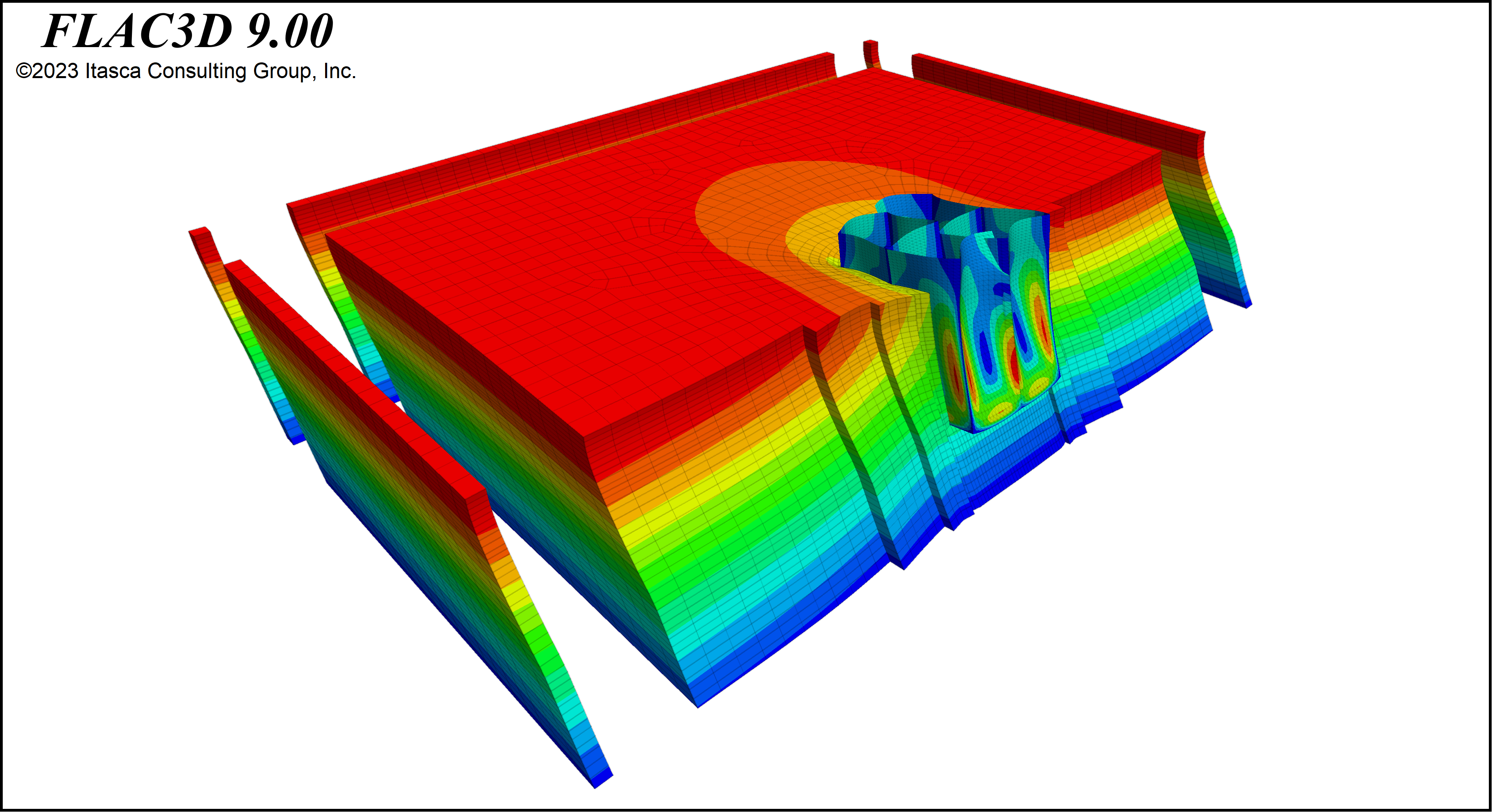
MAXWELL DAMPING
Systems undergoing dynamic loading, such as an earthquake or explosive blast, naturally dissipate vibrational energy over time. For a dynamic numerical analysis, some form of artificial damping needs to applied so that the model should reproduces such energy losses.
FLAC3D 9 introduces Maxwell dynamic damping for time-domain seismic deformation analyses. FLAC3D models using Maxwell damping can be 10-200 times faster, and as accurate, than those models using Rayleigh damping. With Maxwell damping, large, 3D site response and soil-structure interaction are now practical to analyze.

SOIL STRUCTURE INTERACTION
For example, the FLAC3D 9 model shown below simulates a caisson foundation, using shell elements, which is much stiffer than the surrounding soils. This model consists of nearly 100,000 zones and over 15,000 structural shell elements.
An analysis of a 30-second earthquake input time history for this model, using a typical computer, requires approximately 10 hours using Maxwell damping, whereas it would require more than 50 days when Rayleigh damping was used. In other words, using Maxwell damping, the calculation is 120 times faster for this model. This is a substantial benefit for similar practical projects.

RAMBERG-OSGOOD HYSTERETIC DAMPING
The Ramberg-Osgood model has also been added as one of several hysteretic damping calculations for dynamic modeling. The Ramberg-Osgood hysteretic model overcomes the shortcoming of overly large damping at large shear strains by other available hysteretic damping models in FLAC3D. Hysteretic damping may be preferred where: (1) designers and licensing authorities do not accept fully nonlinear simulations and (2) faster model run times are desired, as additional damping (e.g., Rayleigh) may not be necessary.
